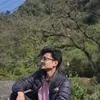Travel Forum
Get answers & discussion from real Tripoto travelers
Search Questions
Good call on getting the AC checked - there's nothing worse than overheating on a long drive. A few other tips I've learned over the years - always have plenty of water stocked up, take breaks in the shade when possible, and consider an ice jacket to keep your drink bottles cool. Also, sunrise/sunset are the best times to hit the road when it's roasting out. Safe travels and stay cool!
10 Useful Tips for Group Travelling for a Memorable Experience
1 Response

praharsha devraj
Certainly! Group travel can be incredibly rewarding but also comes with its own set of challenges. Here are 10 useful tips for making your group travel experience memorable: Plan Ahead, but Remain Flexible: Plan the itinerary and activities in advance, but be open to changes based on group dynamics and unexpected circumstances. Establish Clear Communication: Set up a group chat or communication platform to keep everyone informed about plans, meeting times, and any changes. Communication is key to avoiding misunderstandings. Assign Roles: Delegate responsibilities within the group, such as trip planner, navigator, treasurer, etc., to ensure that tasks are evenly distributed and everyone contributes. Respect Each Other's Preferences: Understand that everyone in the group may have different interests and travel styles. Be open to compromise and try to include activities that cater to everyone's preferences. Budget Wisely: Discuss and agree on a budget that works for everyone in the group. Keep track of expenses and share costs fairly to avoid any financial disagreements. Be Patient and Tolerant: Group dynamics can be challenging, especially when spending a lot of time together. Practice patience, tolerance, and understanding, and be willing to resolve conflicts amicably. Pack Light: Encourage everyone to pack light and efficiently to make transportation and moving around easier. Avoid overpacking and unnecessary items. Also Read :https://www.indianeagle.com/traveldiary/tips-for-group-traveling/
While there may be anecdotal accounts of certain times being less stringent for vehicle checks along the Manali-Leh highway, it's crucial to prioritize safety and compliance with local regulations at all times. The rules and enforcement policies can vary, and relying solely on a specific time to avoid checks may not be reliable or advisable. When embarking on a journey through Ladakh on a Manali bike, it's essential to ensure your vehicle is in excellent condition and complies with all legal requirements. This includes having all necessary permits, licenses, and paperwork in order. Additionally, adhering to speed limits, wearing appropriate safety gear, and respecting local customs and road etiquette are essential for a smooth and enjoyable trip. Moreover, it's highly recommended to stay informed about current road conditions, weather forecasts, and any travel advisories before setting out. Planning your journey carefully, including rest stops and accommodations along the way, can help mitigate risks and ensure a more enjoyable experience. Lastly, consider joining a reputable tour group or consulting with experienced travelers who have tackled the Manali-Leh route before. Their insights and advice can be invaluable in navigating the challenges and making the most of your adventure through this breathtaking region.
From my experience, I haven't heard of any specific trick regarding timing for Manali bikes in Ladakh. However, it's true that early mornings usually see less traffic and checkpoints might be less stringent. Yet, I'd recommend ensuring all your documents and permits are in order regardless of the time you start your journey. Additionally, it's crucial to acclimatize properly and have a well-maintained bike for the challenging terrain of Ladakh. It's always wise to stay updated with the latest regulations and local advice for a smoother and safer journey.
Places to Visit in Lakshadweep for an Amazing Island Experience
3 Responses

praharsha devraj
If you are planning to visit Lakshadweep anytime visit these 3 important islands:
Kavratti island: Island is famous for its beautiful sunsets and sunrise.
Minicoy: And go for a boat ride
Kadmat: Indulge yourself in local cuisines and delicacies in Kadmat Island.
Lakshadweep, a tropical paradise nestled in the Arabian Sea, offers an unparalleled island experience for travelers seeking tranquility, natural beauty, and cultural richness. Comprising 36 islands, this Union Territory of India boasts pristine beaches, azure waters, vibrant marine life, and a unique local culture that beckons visitors from around the world. Exploring Lakshadweep is akin to stepping into a postcard-perfect setting where every corner exudes serenity and charm. One of the most enchanting aspects of Lakshadweep is its stunning beaches. Agatti Island, with its powdery white sands and crystal-clear waters, is a haven for sunbathers, swimmers, and water sports enthusiasts. Here, visitors can indulge in activities like snorkeling, scuba diving, and kayaking amidst thriving coral reefs teeming with colorful marine life. Kadmat Island is another gem, renowned for its secluded beaches, swaying palm trees, and breathtaking sunsets that paint the sky in hues of orange and pink. It's an ideal spot for romantic getaways and quiet contemplation. For those interested in exploring Lakshadweep's rich underwater world, the uninhabited island of Bangaram is a must-visit destination. Its pristine coral reefs, vibrant fish species, and clear visibility make it a paradise for snorkelers and divers. Experienced guides lead expeditions to the island's best dive sites, where divers can encounter everything from majestic manta rays and sea turtles to colorful reef fish and elusive moray eels. Bangaram also offers opportunities for fishing excursions, where visitors can try their hand at traditional methods like handline fishing or simply enjoy the thrill of catching their dinner. In addition to its natural beauty, Lakshadweep is also home to a rich cultural heritage that is evident in its local traditions, cuisine, and architecture. A visit to Kavaratti, the administrative capital of Lakshadweep, provides insight into the island's history and culture. The Ujra Mosque, with its intricate wood carvings and ornate domes, is a testament to the region's Islamic heritage and architectural prowess. Visitors can also explore the narrow lanes of the old town, where traditional houses adorned with vibrant murals offer a glimpse into daily life on the island. Lakshadweep's cuisine is a delightful blend of flavors influenced by its geographic location and cultural diversity. Fresh seafood, coconut, and spices are staple ingredients in local dishes, which range from savory seafood curries to sweet coconut-based desserts. Travelers can savor authentic Lakshadweepi cuisine at local eateries and beachside cafes, where dishes like grilled fish, lobster masala, and coconut rice are served with warm hospitality and a side of stunning ocean views. For nature enthusiasts and bird watchers, the uninhabited island of Pitti is a paradise waiting to be explored. Home to a thriving population of seabirds, including terns, gulls, and frigatebirds, Pitti Island offers unparalleled opportunities for bird watching and wildlife photography. Visitors can embark on guided tours of the island's bird sanctuaries, where they can observe nesting colonies, migratory birds, and rare species in their natural habitat. The island's pristine beaches and lush vegetation also provide habitat for a variety of terrestrial wildlife, including hermit crabs, green turtles, and coconut crabs. Lakshadweep is not only a destination for leisure travelers but also a haven for adventure seekers looking to challenge themselves amidst nature's wonders. The island of Minicoy, with its towering lighthouse and rugged coastline, offers opportunities for trekking, rock climbing, and cliff diving. Adventurous souls can embark on guided expeditions to explore the island's hidden caves, secret coves, and panoramic viewpoints, where they can soak in breathtaking vistas of the surrounding ocean and coastline. For those seeking a truly immersive cultural experience, a visit to Lakshadweep during one of its vibrant festivals is highly recommended. The annual Laccadive Festival, celebrated across the islands, is a colorful extravaganza featuring traditional music, dance, and cuisine. Visitors can witness performances of folk dances like the Lava Dance and Parichakali, participate in cultural workshops, and sample delicious delicacies prepared by local chefs. The festival offers a unique opportunity to interact with the islanders, learn about their customs and traditions, and forge lasting memories of this enchanting destination. Check more on: https://kaufen-fuhrerschein.com/
Well there can be depending on where you are renting. prefer good rental companies and aviod local ones as they may ask for deposit money which could be hard to get back. Additionally, cleaning charges or maintenance charges could be charged. Best is be clear about all expenses and then proceed with booking.
Before renting a car, make sure to inquire about any hidden fees like insurance, fuel charges, and additional driver costs to avoid surprises later on.
In addition to the ones mentioned below, sattu is also good to drink in summer and in some parts of Eastern India it is popular.
The best time to go for the Rajmachi fireflies trek generally falls in the late May to early June period. However, the exact timing can vary slightly each year depending on the prevailing climatic conditions.
Yes, you're correct. The best time to go for the Rajmachi Fireflies Trek is typically from late May to the second week of June. However, it's always a good idea to double-check current climatic conditions before planning your trip to ensure the best experience.
Salar Jung Museum - Biggest Museum in Hyderabad
Nizam Museum Sudha Car Museum Telangana State Archeology Museum Health Museum
Hyderabad, the capital of Telangana in southern India, boasts several museums that offer fascinating insights into the city's history, culture, and art. Among the top museums in Hyderabad are: Salar Jung Museum: One of the largest museums in India, Salar Jung Museum houses an extensive collection of art, artifacts, and antiques from various civilizations, including Indian, Persian, European, and Far Eastern. It's renowned for its diverse exhibits, including sculptures, paintings, manuscripts, textiles, and weapons.
Telangana State Archaeology Museum: Located in the Public Gardens, this museum showcases artifacts and relics dating back to ancient and medieval times, providing a glimpse into the region's rich archaeological heritage.
Nizam Museum: Housed in the historic Purani Haveli, this museum offers insights into the opulent lifestyle of the Nizams of Hyderabad. Visitors can explore the Nizams' personal belongings, including clothing, jewelry, gifts, and vintage cars.
Birla Science Museum: Ideal for science enthusiasts, this museum features interactive exhibits on science and technology, including models of dinosaurs, prehistoric life, and space exploration.
BM Birla Planetarium: Adjacent to the Birla Science Museum, the planetarium offers captivating shows on astronomy and space science, making it an educational and entertaining destination for visitors of all ages.
Also Read : https://www.indianeagle.com/traveldiary/best-museums-in-hyderabad/
You may visit Tungnath and Deoriatal.The place is simply a piece of heaven...
Hi Aditya, I am sure this blog will help you plan: https://www.tripoto.com/india/trips/tourist-places-in-india-you-must-visit-in-june-to-escape-the-summer-heat
As of my last update in January 2022, Bhutan has been gradually improving its internet infrastructure, but the availability and reliability of WiFi connectivity can vary widely depending on the location and the specific hotel or hostel you choose to stay in. In larger cities like Thimphu and Paro, you're more likely to find hotels and hostels with decent WiFi connectivity suitable for remote work. However, even in these areas, the internet speeds may not be as fast or as reliable as you're used to in other countries. Additionally, in more remote or rural areas, WiFi availability may be limited or nonexistent. If you're planning to work remotely while in Bhutan, it's a good idea to check with your accommodation beforehand to inquire about the quality of their WiFi connection. Some hotels and hostels may offer WiFi in common areas or provide access to internet cafes nearby. Another option is to purchase a local SIM card with a data plan, which can provide you with internet access via mobile networks. Bhutan's main telecommunications provider is Bhutan Telecom, and they offer data packages that you can use with your smartphone or mobile hotspot device. Overall, while it's possible to work remotely in Bhutan, especially in larger towns, it's important to manage your expectations regarding internet connectivity and plan accordingly.https://ayatulkursihindi786.com/
Hi Bhawna, Out of the two places, Munsiyari would be a better fit for your offbeat trip in the first week of June. Here's a breakdown of why: Offbeat Munsiyari is slightly less explored compared to Harsil. It's a tiny hamlet nestled amidst the majestic peaks of the Kumaon Himalayas, offering a true escape from the crowds. Homestays While both locations have limited options, Munsiyari offers a slightly wider range of homestays and guesthouses compared to Harsil. These stays provide a more immersive experience into the local culture.
Connectivity Both locations have decent mobile connectivity, but Munsiyari has a slight edge. However, internet speeds can be slow and unreliable, so be prepared for occasional disruptions. It's best to download any work files you'll need beforehand. Overall, Munsiyari seems like a better choice for your preferences. It's more offbeat, has a wider range of homestays, and offers decent connectivity for working remotely. Just be prepared for potential internet slowdowns.
Kashmir, often referred to as "Paradise on Earth," is renowned for its breathtaking natural beauty and rich cultural heritage. Here are some of the best places to visit in Kashmir: Srinagar: The capital city of Jammu and Kashmir, known for its serene Dal Lake, houseboats, Mughal gardens like Shalimar Bagh and Nishat Bagh, and the historic Shankaracharya Temple.
Gulmarg: Famous for its picturesque landscapes, Gulmarg offers opportunities for skiing, trekking, and cable car rides amidst snow-capped peaks and lush meadows.
Pahalgam: A scenic town renowned for its lush green valleys, meandering rivers, and adventurous activities like white water rafting and trekking to attractions like Betaab Valley and Aru Valley.
Sonamarg: Known as the "Meadow of Gold," Sonamarg is a paradise for nature lovers with its pristine alpine landscapes, glaciers, and trekking trails.
Leh-Ladakh: While technically not in Kashmir but in the union territory of Ladakh, it's a must-visit destination with its stark yet stunning landscapes, monasteries like Hemis and Thiksey, and adventure activities like trekking and river rafting.
Martand Sun Temple: An ancient Hindu temple dedicated to the Sun God, located in Anantnag district, known for its architectural grandeur and historical significance.
These are just a few highlights of the many enchanting places Kashmir has to offer, each promising a memorable and enriching travel experience.
Discover the enchanting beauty of Kashmir with its myriad attractions. Explore the serene valleys, indulge in adventure sports like snowboarding and skiing, and experience the thrill of river rafting. Don't miss the tranquil Shikara rides on Dal Lake or the delicious Kashmiri cuisine. With options for camping and a range of hotels to choose from, Kashmir offers an unforgettable experience for travelers seeking adventure, relaxation, and natural beauty in every season.
Visit : https://wanderon.in/india-trips/kashmir-tour-packages
Hi Denish, Pokhara is a popular hub for trekkers in the Annapurna region, but not necessarily the starting point for the treks themselves. The most common starting point for the Annapurna Circuit trek is actually Besisahar, a town located about 7 hours by bus from Kathmandu. You can also start the trek from Bhulbhule, which is 7 kilometers away from Besisahar. Also, here is a page to help you plan your trek from other bloggers: https://www.tripoto.com/search?keywords=annapurna%20base%20camp
Good day good place to visit this place Nepal, recomnend to visit everywhere only you can, very beautiful to everyone recommend to visit there.
Hi Pranali, Whether Vietnam in July is a good option for you depends on what you're looking for in a vacation. Here's a breakdown of the pros and cons: Pros: Central Vietnam has great weather:July is the dry season in central Vietnam, which means you can expect plenty of sunshine and hot temperatures (average highs in the upper 80s Fahrenheit). This is a great time to visit if you want to relax on the beach or hike in the mountains. Fewer crowds: July is considered the shoulder season in Vietnam, so you'll encounter fewer crowds than you would during the peak season (December to February). This can be a plus if you prefer a more relaxed travel experience. Vibrant festivals:July is home to a number of Vietnamese festivals, such as the Hue Festival and the Nam Hoi An Lantern Festival. These festivals offer a great opportunity to experience Vietnamese culture. Cons: Monsoon season in the north and south: July is the rainy season in northern and southern Vietnam. This means you can expect afternoon showers and occasional flooding. However, the showers are usually brief and the sun usually comes out again shortly afterwards. High humidity: July is also a very humid month in Vietnam. This can be uncomfortable for some people, especially those who are not used to it. Not ideal for trekking: The rainy season can make trekking in Vietnam difficult or even dangerous. If you're planning on doing any trekking, it's best to do it during the dry season (November to April). Overall, July can be a good time to visit Vietnam, especially if you're interested in spending time in central Vietnam. However, it's important to be aware of the weather conditions before you go.
Weather: July in Vietnam is usually humid and hot with occasional drops of rain, particularly in the north and centre. Be ready for strong humidity and temps. Vietnam's low season, which runs from July to July, means fewer tourists and possibly better prices on lodging and activities. Lush Landscapes: July is when Vietnam's landscapes are at their greenest and most lush, presenting stunning vistas, especially in rural and mountainous locations, despite the periodic rainfall. Visit iEagle for reasonably priced airline tickets! They provide excellent airfare discounts. Reserve today to save money on your upcoming travel.
https://www.ieagle.com/
Thiruvananthapuram, the capital city of Kerala, offers a variety of budget-friendly accommodation options suitable for families. Here are some suggestions: Guesthouses and Homestays: Opting for guesthouses or homestays can often be more economical than hotels. These accommodations provide a cozy and homely atmosphere, and some may offer amenities like kitchen facilities where you can prepare your meals, helping to cut down on expenses.
Budget Hotels: Thiruvananthapuram has numerous budget hotels scattered across the city, offering clean and comfortable rooms at affordable rates. Look for hotels that offer family rooms or suites to accommodate a family of four.
Hostels: While traditionally associated with solo travelers or backpackers, some hostels also offer private family rooms or dormitory-style accommodations that can be budget-friendly options for families.
Vacation Rentals: Platforms like Airbnb or Vrbo offer a range of vacation rental options including apartments, condos, or houses which can often provide more space and amenities compared to traditional hotel rooms, and may be more cost-effective for families.
Government Guest Houses: Thiruvananthapuram might have government-run guest houses or tourist hostels which offer basic accommodation facilities at affordable rates.
Whichever option you choose, it's advisable to book in advance, especially during peak tourist seasons, to secure the best rates and availability.
Mumbai is a paradise for street food lovers, offering a diverse range of culinary delights that reflect the city's vibrant culture and rich culinary heritage. Here are some must-visit places for street food in Mumbai: Mohammed Ali Road: Famous for its mouthwatering kebabs, tikkas, and other Mughlai delicacies, Mohammed Ali Road comes alive during Ramadan with its bustling food stalls and aromatic flavors.
Chowpatty Beach: This iconic beach is not just a leisure spot but also a hub for street food. Visitors can enjoy a variety of snacks like pav bhaji, bhel puri, and sev puri while taking in the scenic views of the Arabian Sea.
Crawford Market: Located in South Mumbai, Crawford Market is renowned for its fresh produce as well as its street food stalls offering delectable treats like vada pav, samosas, and sandwiches.
Colaba Causeway: This bustling street market is a favorite among tourists and locals alike for its eclectic mix of street food options, including kebabs, falafel wraps, and chaat.
Khau Gallis (Food Lanes): Explore the various khau gallis across the city, such as Ghatkopar Khau Galli and Carter Road Khau Galli, where you can sample a wide array of street food delicacies ranging from pav bhaji to dosas to frankies.
These are just a few highlights of Mumbai's vibrant street food scene, which promises an unforgettable culinary experience for food enthusiasts.
Read Also : https://www.indianeagle.com/traveldiary/street-food-in-mumbai/
During my last visit to Mumbai, I had the pleasure of exploring some incredible street food destinations. From the bustling lanes of Juhu Beach to the vibrant markets of Colaba, Mumbai is a paradise for food lovers. One of my favorite spots was Chowpatty Beach, where I indulged in delicious pav bhaji and crispy bhel puri while enjoying the sea breeze. I also ventured to Mohammad Ali Road, known for its mouthwatering kebabs and flavorful biryanis, which left me craving for more. And let's not forget about the iconic vada pav stalls scattered across the city, serving up spicy potato fritters sandwiched between soft buns – a true Mumbai delicacy. Exploring the street food scene in Mumbai was an unforgettable culinary adventure that I can't wait to experience again.
Packing for a week-long trip requires careful planning to ensure you have everything you need without overpacking. Here's a comprehensive guide to help you pack efficiently for your week-long adventure: 1. Make a Packing List: Start by creating a packing list that includes essential items such as clothing, toiletries, medications, electronics, and any special items you might need.
Consider the activities you'll be doing and the weather at your destination to tailor your packing list accordingly.
2. Choose Versatile Clothing: Select clothing items that can be mixed and matched to create multiple outfits.
Pack lightweight, breathable fabrics for warmer climates and layers for cooler destinations.
Include essentials like underwear, socks, pajamas, and comfortable walking shoes.
Don't forget swimwear if you'll be near water and any specialized gear for activities like hiking or skiing.
3. Pack Toiletries and Medications: Bring travel-sized toiletries to save space and comply with airline regulations.
Pack essentials like toothpaste, toothbrush, shampoo, conditioner, body wash, and sunscreen.
Include any prescription medications, over-the-counter medicines, and first-aid supplies you may need.
Remember to pack any personal hygiene products you use regularly.
4. Organize Your Electronics: Bring essential electronics such as your phone, charger, and possibly a portable power bank.
Consider bringing a camera, laptop, or tablet if you'll need them during your trip.
Don't forget any necessary adapters or converters for international travel.
5. Roll Your Clothes: Roll your clothes instead of folding them to save space and minimize wrinkles.
Place heavier items like jeans and jackets at the bottom of your suitcase and lighter items on top.
Utilize packing cubes or compression bags to further maximize space and keep items organized.
6. Pack Travel Accessories: Bring a travel-sized umbrella or raincoat if rain is expected during your trip.
Include a travel-size laundry detergent if you'll need to do laundry during your trip.
Don't forget travel essentials like a reusable water bottle, travel pillow, eye mask, and earplugs.
7. Consider the Itinerary: Tailor your packing list to match your planned activities. For example, if you're going on a beach vacation, pack beach towels, hats, and sunglasses.
If you'll be attending formal events or dining at upscale restaurants, include appropriate attire.
Pack any necessary gear or equipment for specific activities such as hiking, snorkeling, or skiing.
8. Leave Room for Souvenirs: Leave some extra space in your suitcase for souvenirs or items you may purchase during your trip.
Consider packing a foldable bag or tote to use for carrying souvenirs on your return journey.
Packing efficiently for a week-long trip can make your travel experience smoother and more enjoyable. Here are some helpful tips: Make a packing list: Create a checklist of essential items you'll need for the trip, including clothing, toiletries, electronics, documents, and any specific items for your destination or activities.
Plan outfits: Choose versatile clothing items that can be mixed and matched to create different outfits. Consider the weather and planned activities when selecting your clothing.
Pack light: Stick to the essentials and avoid overpacking. Choose lightweight and wrinkle-resistant clothing to maximize space in your luggage.
Use packing cubes or organizers: Keep your belongings organized and easily accessible by using packing cubes or organizers. This will help you find items quickly and keep your suitcase tidy throughout the trip.
Roll clothes instead of folding: Rolling clothes instead of folding them can save space and reduce wrinkles. This packing technique also allows you to fit more items in your luggage.
Pack travel-sized toiletries: Opt for travel-sized toiletries or transfer your favorite products into small containers to save space and comply with TSA regulations for carry-on luggage.
Don't forget essential documents: Make sure to pack important documents such as your passport, ID, travel insurance, itinerary, and any necessary reservations or tickets.
Leave room for souvenirs: If you plan on shopping during your trip, leave some space in your luggage for souvenirs or gifts you may want to bring back home.
By following these tips, you can pack efficiently and ensure you have everything you need for a successful week-long trip.
Also Read : https://www.indianeagle.com/traveldiary/india-packing-list/
Unanswered Questions For You
Earn credits when your answers are upvoted by others.































